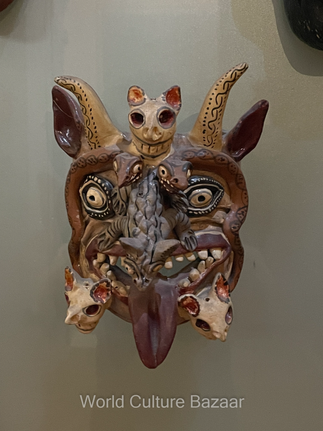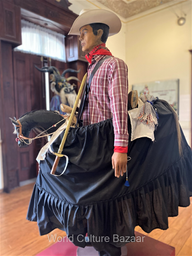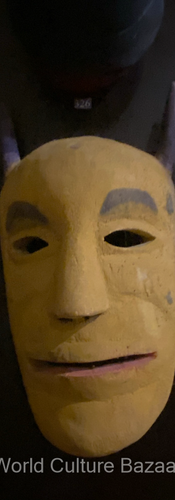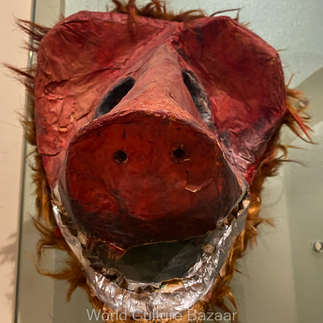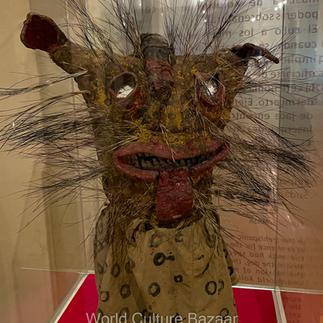Mexican Masks
- worldculturebazaar
- Jul 1, 2021
- 2 min read
Mask making is one of Mexico's oldest arts, reflecting ancient spiritual beliefs and traditions.
If you happen to be in San Luis Potosi, do not miss a chance to visit the National Mask Museum. It is located on one of the three city's plazas - Plaza del Carmen, in the "Marti Palace", the former residence of a landowner and miner, Ramón Martí Llorent, which became a federal building through an auction in 1903. Since then it has been used for various purposes, among them as the telegraph, until in 1982 when the current museum was opened.
The museum has about 1300 masks and dance costumes, most of them Mexican origin. The collection of Mexican masks that was the start of the National Mask Museum was donated in 1981 by engineer, Víctor José Moya Rubio, a passionate collector of the mask. The collection has been increased with donations from embassies, public and private institutions, artisans and private collectors. The museum is relatively small but very informative, most texts are in Spanish and English. It is a museum where even children would not get bored.
And you can not beat the entrance price: the ticket is just MXN 20 (ca 1 USD) for adults and MXN 10 (ca 0.50 USD) for students and children.
http://museodelamascaraslp.org/
During the Pre-Hispanic period, use of masks was reserved only for priests, governors, and warriors. In a magical way, masks helped to communicate with gods and nahuales (people with the power to transform themselves into animals), and control natural forces by giving the mask the power of granting good hunt, crops, health, and protection.
By the colonial period, the mask was incorporated in the theater with didactic and evangelistic objectives. Angel, saint, conquistador and devil masks gather together with pagan gods and animal masks.
Most of the masks are made of wood, but other materials, like leather, wax, bone, cardboard, paper mache, stone are common as well.
Bats, according to mythology, used to live in Xibalba, reign of the night and darkness. The bat dance is related to fertility and death, disease and water.
Some of the oldest masks are made for dancing, a common ritual in many ancient societies, associated with the cosmogony of the universe, the agriculture cycle and the cult of corn. After the Conquest, the dances were incorporated into religious festivals.
The dancer's masks are prepared according to traditional craftsmanship and is an important part of clothing. The dancer dances to keep a promise, a vow or to purify.
Dualism is very natural and organic in everyday Mexican life. Day and night, life and death, good and evil are more complementary than the opposite. Fights between these forces have very old traditions, and nowadays they are still widely represented during various celebrations, especially Eastern.
Often a mask is the expression of fantasy and diversity of shapes. Some masks represent just the dominant quality of an animal.
Carving details, paint, and decoration make each mask unique. Different regions have their own peculiarities: the masks from northern Mexico usually more primitive and plain, versus the ones from central and southern Mexico, which are more detailed and colorful. Some areas use horsehair to create mustaches, eyelashes, and hair, others use a very realistic man-made glass eye or painted cow horns.







